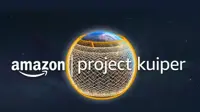Google launches Project Tango to make mobile devices understand space and motion
21 Feb 2014
When Google sold Motorola Mobility to Lenovo for $2.9 billion, it retained the company's best division, its Advanced Technology and Projects group for the Android team (See: Lenovo to buy Motorola Mobility from Google for $2.91 bn).
The internet search giant's Advanced Technology & Projects group has now announced Project Tango which aims to give ''mobile devices a human-scale understanding of space and motion''.
According to Techcrunch, Project Tango, is an Android-based prototype 5-inch phone and developer kit with advanced 3D sensors, which allow the phone to track motion, and build a visual map of rooms using 3D scanning.
Google intends to combine the 3D sensors with advanced computer vision techniques that would help churn out newer innovations for indoor navigations, games and so on. According to commentators, Google seems to be in the process of building something like the Sony Kinect or Playstation Move, into a small 5-inch phone.
Movidius' Myriad 1vision processor platform which Google is using in Project Tango had sensors which were considered very expensive and difficult to employ earlier.
They were also said to rapidly drain the phone's battery. The new generation vision processors are however, known to consume significantly lesser power, which is one of the reasons, why Google finally went ahead with the project.
According to Johnny Lee, leader of Project Tango, the goal of Project Tango was to give mobile devices a human-scale understanding of space and motion, the Verge reported.
Greenbot.com reported that the custom 5-inch Android phone came with a 4-megapixel camera, an additional motion-tracking camera, and a third depth-sensing camera, including a pair of processors optimised for computer vision calculations.
The phone tracked its absolute position and orientation in 3D over 250,000 times a second, even as it made a virtual 3D map of whatever it was pointing at.
The idea behind Project Tango was to see what kind of applications developers would dream up for the technology.
Google hopes that it would be able to unlock new kinds of smart, vision-based applications based on the 3D sensing and vision technology that it had built into the phone. With applications getting an almost human-like understanding of space, developers would be able to create applications that simply were not possible earlier.
In its announcement, Google askd, ''What if you could capture the dimensions of your home simply by walking around with your phone before you went furniture shopping? What if directions to a new location didn't stop at the street address? What if you never again found yourself lost in a new building?''









.webp)














